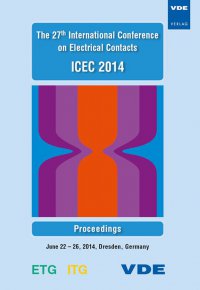Contact Material Effects on Dynamic Contact Sticking
Conference: ICEC 2014 - The 27th International Conference on Electrical Contacts
06/22/2014 - 06/26/2014 at Dresden, Deutschland
Proceedings: ICEC 2014
Pages: 6Language: englishTyp: PDF
Personal VDE Members are entitled to a 10% discount on this title
Authors:
Muetzel, Timo; Bender, Michael; Niederreuther, Ralf (Umicore AG & Co. KG, Hanau-Wolfgang, Germany)
Abstract:
The dynamic welding behaviour at make operation is one important characteristic of electrical contacts and a key parameter to ensure secure usage of electricity. Model switch and device tests have been performed to work out the main factors influencing contact sticking. The behaviour of different silver metal oxides (Ag/CdO, Ag/SnO2, Ag/ZnO), including various groups of additives like low melting and boiling metal oxides (Bi2O3), and combinations thereof were studied under different loads. Two main working mechanisms – that significantly influence and define the sticking tendency – have been found for different arcing loads. They can be explained by metallurgical investigations and divided into mechanisms under low (below 0.3 Ws), medium (0.3 – 10 Ws), and high (above 10 Ws) arcing load. Low melting additives like Bi2O3 can effectively reduce weld strength at low and medium arcing energies by building up embrittling surface layers. This function is not given any more for high make arc energies or make operations on previous high energy break arcs, due to metal oxide depleted surface layers. Sublimating metal oxides (e.g. ZnO) leave bubbles within the microstructure and work better at high arcing energies. The paper presents a scientific basis to explain contact sticking failures under different types of loads and can be seen as a guideline for appropriate contact material selection.


